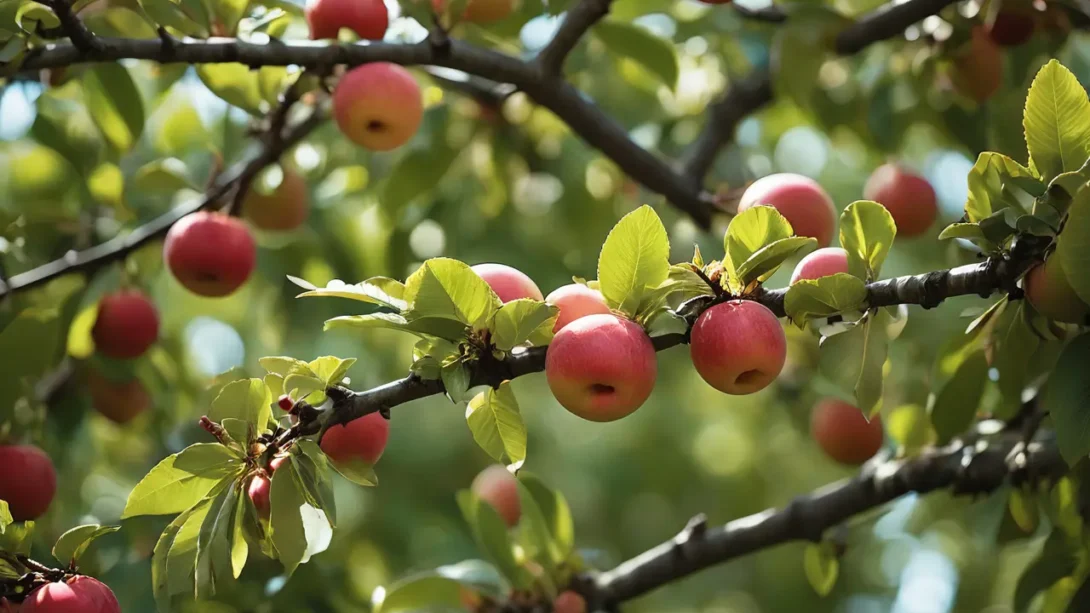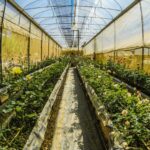The allure of planting fruit trees in one’s garden lies not only in the beauty they add to the landscape but also in the promise of fresh, home-grown fruits. However, the waiting period before the first harvest can often test the patience of many gardeners. This is where choosing the fastest growing fruit trees becomes crucial, as it significantly shortens the time from planting to picking. In this guide, we’ll explore those fruit trees that swiftly move from saplings to producers, ensuring you enjoy the fruits of your labor sooner rather than later. It’s important to remember that the growth rate and productivity of fruit trees are influenced by several factors including sunlight, soil type, water availability, and overall climate.
Key Factors for Rapid Growth
Before diving into the specifics of fast-growing fruit trees, it’s essential to understand the key factors that contribute to their rapid growth and fruit production. Sunlight is paramount; most fruit trees require full sun to thrive and produce fruit. The right soil type cannot be overlooked either; well-draining soil enriched with organic matter provides the best foundation for growth. Regular watering, especially during the early years and dry periods, ensures steady growth. Additionally, the climate of your area plays a significant role; some trees are better suited to warm climates, while others thrive in cooler regions. Understanding these factors and how they apply to your garden will help you select the best trees for your environment.
Top Fast-Growing Fruit Trees
In the realm of fast-growing fruit trees, several species stand out for their quick transition from planting to production. Let’s take a closer look at some of these fruitful contenders.
Peach Trees (Prunus persica)
Peach trees are among the fastest growers, capable of providing fruit within three to four years after planting. They thrive in full sun and require well-drained soil. Peaches need regular watering, especially during the flowering and fruiting stages, to maintain their rapid growth and ensure a bountiful harvest. However, they are susceptible to pests and diseases, so proactive care is essential.
Apple Trees (Malus domestica)
Apple trees are another popular choice for gardeners looking for quick results. While some varieties can take a bit longer to mature, there are fast-growing types that can start producing fruit in as little as four to five years. The key to rapid growth and early fruiting in apple trees lies in selecting the right variety for your climate and ensuring they receive full sunlight, regular watering, and proper pruning.
Pear Trees (Pyrus)
Pear trees are not only known for their delicious fruit but also for their relatively fast growth rate. Certain varieties can bear fruit within four to six years of planting, making them a great choice for eager gardeners. Pears require full sun and well-draining soil to flourish. Like apple trees, choosing a variety suited to your local climate can significantly impact their growth speed and fruit production.
Fig Trees (Ficus carica)
Fig trees are renowned for their rapid growth and early fruit production, often bearing fruit within just two to three years of planting. They are particularly suited for warmer climates but can be grown in cooler regions with some extra care, such as planting in a sheltered spot or using protective measures during frost. Figs thrive in full sun and require a well-drained soil, preferably with a neutral to alkaline pH level. One of the appealing aspects of fig trees is their low maintenance once established; they need minimal pruning compared to other fruit trees and are less prone to diseases and pests.
Cherry Trees (Prunus avium and Prunus cerasus)
Cherry trees, both sweet (Prunus avium) and sour (Prunus cerasus), can grow quite quickly, with some varieties beginning to bear fruit within three to five years. They require full sun and well-drained soil to reach their full potential. Cherry trees also need a cold period during the winter to produce fruit, making them more suitable for temperate climates. Regular watering, especially during the fruit development stage, and proper pruning will ensure healthy growth and abundant fruit production. However, cherries can be susceptible to certain pests and diseases, so it’s important to monitor them closely and take preventive actions as necessary.
Citrus Trees (Lemons, Oranges, etc.)
Citrus trees, including lemons, oranges, and limes, are favored for their fast growth and relatively quick fruiting times, often producing fruit within three to six years. They are best suited for warmer climates but can be grown in pots in cooler areas to move indoors during cold weather. Citrus trees thrive in full sunlight and require well-draining soil with a slightly acidic to neutral pH. Regular watering and fertilization with a citrus-specific fertilizer can help ensure rapid growth and a high yield of fruit. Additionally, pruning to shape the tree and remove any dead or diseased branches can promote healthier growth.
Planting and Care Tips for Fast Growth
To maximize the growth rate and fruit production of your fast-growing fruit trees, consider the following planting and care tips:
- Planting: Choose a sunny spot with at least six to eight hours of direct sunlight per day. Ensure the soil is well-draining and amend it with organic matter if necessary. When planting, make sure the root ball is level with the soil surface and water thoroughly after planting to settle the soil around the roots.
- Watering: Regular watering is crucial, especially during the tree’s first few years and in periods of drought. Deep watering encourages deeper root growth, which supports healthier and more resilient trees.
- Fertilization: Use a balanced fertilizer formulated for fruit trees in early spring, just before new growth begins. Follow the manufacturer’s instructions for the best results.
- Pruning: Proper pruning helps to shape the tree, improve air circulation, and promote the growth of fruiting branches. It’s best to prune fruit trees in late winter or early spring before the buds break.
- Pest and Disease Management: Regularly inspect your trees for signs of pests or disease. Early detection and treatment can prevent minor issues from becoming major problems.
By following these guidelines, you can help ensure your fast-growing fruit trees reach their full potential as quickly as possible, bringing you closer to enjoying fresh, home-grown fruit from your garden.
Challenges and Solutions
Growing fast-producing fruit trees is not without its challenges. Pests, diseases, and growth issues can arise, but with the right knowledge and care, these can be managed effectively.
- Pests and Diseases: Common pests include aphids, borers, and mites, while diseases might range from fungal infections like powdery mildew to bacterial blight. Solution: Implement integrated pest management (IPM) practices, such as encouraging beneficial insects, using neem oil or insecticidal soaps, and removing affected parts of the tree promptly. For diseases, ensure proper spacing and air circulation around your trees and apply fungicides or bactericides as needed.
- Environmental Stress: Extreme weather conditions, such as prolonged droughts or frosts, can stress your trees, impacting their growth and fruit production. Solution: Mulching can help retain soil moisture and protect roots from temperature extremes. For frost protection, consider using frost cloths or moving potted trees indoors if possible.
- Nutritional Deficiencies: Fast-growing fruit trees have high nutritional demands. A lack of essential nutrients can lead to poor growth and low fruit yield. Solution: Conduct soil tests to determine nutrient deficiencies and amend the soil accordingly. Regular applications of balanced, slow-release fertilizers can also prevent deficiencies.
Conclusion
Choosing fast-growing fruit trees for your garden can significantly shorten the waiting time for that first delicious bite of home-grown fruit. From the rapid maturity of fig and peach trees to the slightly longer but worthwhile wait for cherries and citrus, there’s a variety of options to suit different climates and tastes. By understanding the specific needs of your chosen fruit trees and providing them with the right conditions for growth—full sun, well-draining soil, and adequate water—you can enjoy a bountiful harvest year after year.
Remember, the key to success lies in the care and attention you give to your trees. Regular monitoring for pests and diseases, proper nutritional management, and environmental protection will ensure your fruit trees grow quickly and produce abundantly. So, embark on this fruitful journey with patience and enthusiasm. The rewards of fresh, juicy fruit picked straight from your garden are well worth the effort.




